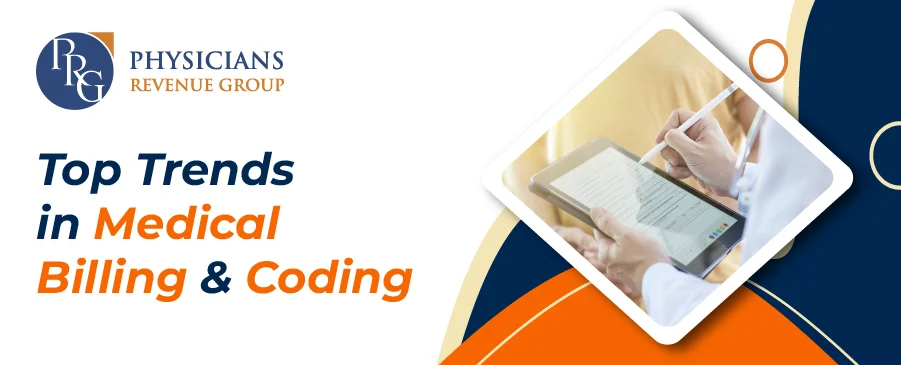
Email: info@prgmd.com | Call: +1 (630) 242-6474
Business hours: 9:00 to 5:00 | Monday to Friday
Email: info@prgmd.com | Call: +1 (630) 242-6474
Business hours: 9:00 to 5:00 | Monday to Friday

Table of Contents
ToggleThe healthcare industry evolves continuously in correspondence to the new laws and regulations, procedures, and public health concerns – all of which give rise to the recent trends in medical billing. As a professional in healthcare coding and medical billing services, you must stay on top of the latest trends and processes that impact your work.
But what is medical billing and coding?
And
What are the career projections in medical billing and coding services?
Let’s first address the career prospects – medical billing and coding remain in demand as a career choice, with a predicted growth rate of 13 percent by 2026. Working in the coding and billing field offers many employment opportunities in many healthcare settings. These include the following:
With that out of the way, let’s dive into the latest trends in medical billing and coding.
Post Covid-19 pandemic, virtual care, especially telemedicine, has grown rapidly. There is a rising trend, higher demand, and utilization of virtual care services. It means healthcare organizations must adopt new care models that facilitate advanced patient care at home. It can include the higher usage of wearable technology and other connected healthcare devices. With the onset of newer devices, there will be a new revenue cycle that will be needed.
With the increasing popularity of virtual care services, medical billers and coders must stay up-to-date with the regulatory changes. This should be about care coverage workers embracing the new work responsibilities. With medical practices pursuing new technologies, billers, and coders must educate providers about billable codes.
The introduction of blockchain technology is one of the latest trends in medical billing. When it comes to healthcare billing, without a doubt, it comes with a lot of challenges, including:
The blockchain is a distributed ledger, helping providers reduce errors with proof of completed transactions. Blockchain technology warrants data integrity and additionally protects patient data-provider data, including:
As one of the latest trends in medical billing, blockchain technology stores billing records in a specific manner that cannot be modified until it reaches the recipient. Furthermore, all data is available and saved in a fixed location.
The new 335 CPT code changes now reflect recent technological advancements. These include remote patient monitoring codes facilitating your connection with patients at home through technology. Furthermore, some inter-professional consultation codes depict the importance of non-verbal technology for patient care. Some other CPT changes consist of:
The billing and coding outsourcing market is to see exponential growth. Consequently, more hospitals, doctor’s practices, and healthcare systems are following the latest trends in medical billing and outsourcing their billing and coding needs. Third-party billing companies that focus on offering billing services are growing. With the increasing costs associated with in-house billing and complex coding systems, medical organizations rely more on third-party companies. Billing companies do the work for provider practices at a much lower cost, thus increasing the bottom line.
Currently, there are 5 medical coding classification systems for identifying and managing medical codes, including:
Share:
Categories
Recently Added

What is an ABN in medical billing?

What does a Clearinghouse do During Claims Submission?

What is EOR in Medical Billing?
We Would Love to Assist You!
We treat your data confidentially and don’t share any information with a third party.